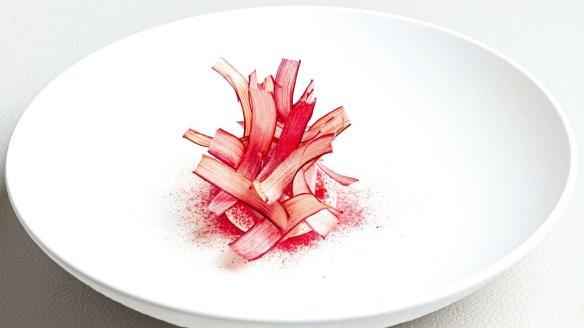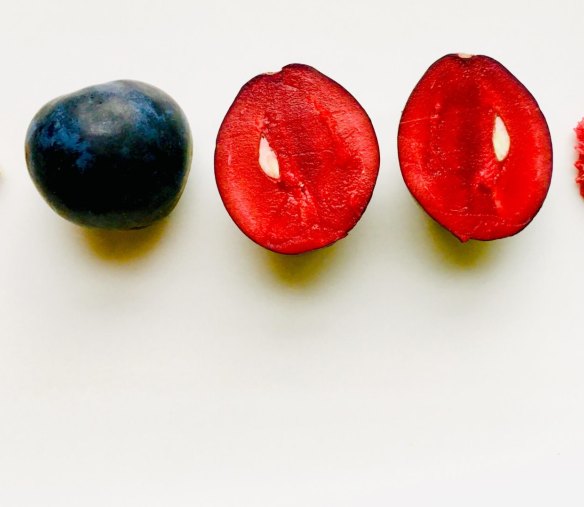Davidson plum: Everything you need to know

What is it?
Davidson plum is the fruit of a native tree found in the rainforests of northern New South Wales and Queensland. It's known scientifically as Davidsonia jerseyana and orray in some Indigenous languages. The fruit grows on trunks and branches and attracts native animals such as tree kangaroos. Only after passing through the digestive tract of native animals or large birds do the seeds germinate. The trees are considered endangered in the wild but have been propagatedin sizeable orchards since the 1990s to produce enough fruit to supply the burgeoning bush food industry.
Why do we love it?

These deep purple fruit are smaller than a European blood plum but packed. The flavour is very sharp – some might say mouth-puckering – but beyond that acidity are myriad aromas, from stewed rhubarb to rosella jam, mingled with musk, rose petals and the earthiness of beetroot. Packed with so many nutrients and antioxidants that they have been deemed superfoods, they are popular with a new wave of chefs who embrace the fruit's sour power.
How do you use it?
Because it is so sour, many cooks like to combine Davidson plum with sugar. One of the most popular recipes is Davidson plum jam. Tessa Cookson, of Forage Byron Bay, uses equal parts plum and sugar, flavouring her jam with cloves, cinnamon and orange rind or vanilla. You can make a Davidson plum sauce by simmering 500g of chopped Davidson plums with 2 cups of brown sugar, three-quarters of a cup of water, salt, light red wine, salt and a pinch of cinnamon for 20-30 minutes and then pushing the mix through a strainer. Serve this with game meats or grilled roo. Mix Davidson plum with forest berries when topping cakes or mix through yoghurt when serving with muesli. Or make a refreshing summer cocktail by simmering 100g of sugar and 100g of Davidson plums with 170ml of water for 15 minutes, then straining through a sieve before mixing 20ml of the syrup with 60ml of Davidson plum gin and topping up the glass with soda water.
Who uses it?
"I love that rich, deep crimson colour from the skin, the tartness and that it is a native ingredient," says former chef Howard Stamp, now owner of Bar Thyme in Melbourne's Footscray. "I've used it in dessert, cocktails and gently roasted it with a dusting of sugar, a little orange zest and vanilla to soften the flesh and liberate those intense juices. Some of that with a little yoghurt and you have the perfect breakfast." His chef at Bar Thyme, Tommy Hope, has been filling doughnuts with Davidson plum jam and this summer they'll be serving duck liver parfait with preserved Davidson plum and warm potato focaccia. In Sydney's Chippendale, Mat Lindsay from Ester dusts cured bonito and macadamia cream with powdered Davidson plum.
Where do you get it?
The NSW varieties are now in fruit and some lucky people living in areas such as Mullumbimby, NSW, will have access to them from their gardens and some farmers' markets. (You'll need a permit to harvest wild fruit.) The plums are seldom sold fresh – most are frozen or dried and powdered. Try health food stores, specialty food stores and online suppliers such as bushfoodshop.com.au and goodness.com.au for frozen and dried fruit respectively.
Suggest an ingredient via email to brainfood@richardcornish.com.au or tweet to @foodcornish
Appears in these collections
- More:
- Food
- Brain food
